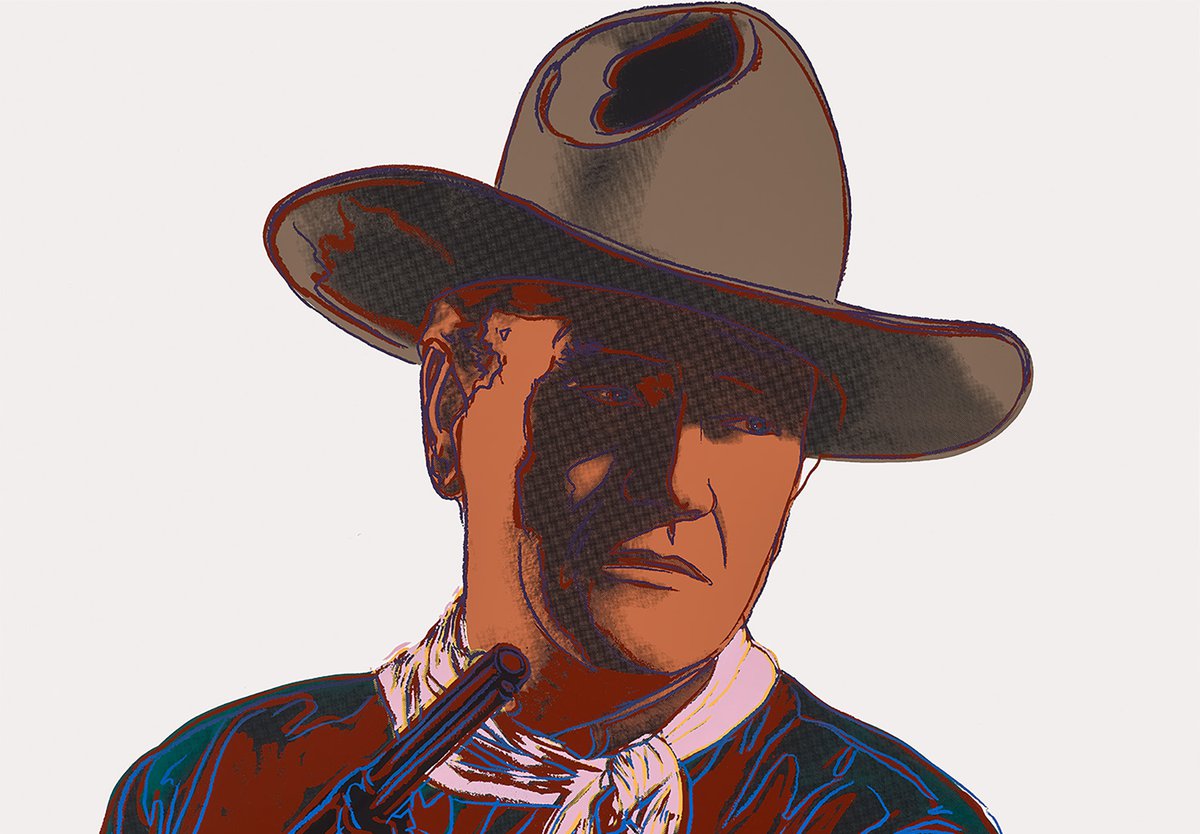Andy Warhol didn’t live long enough to see his version of the American West hang on a wall in Fort Worth, but if he had, he might’ve smirked at the location. Since May 17, John Wayne: An American Experience — the museum devoted to America’s most famous onscreen cowboy — has showcased Warhol’s “Cowboys and Indians” portfolio: ten screenprints laced with irony, nostalgia, and cultural critique.
It’s a collision of icons: the pop artist who turned consumer culture into high art, and the Hollywood cowboy who helped define 20th-century masculinity. In “Cowboys and Indians,” Warhol doesn’t just pay tribute to the legends of the West — he interrogates them. Each 36-by-36-inch print, created in 1986 just a year before Warhol’s sudden death, pulses with vibrant color and contradiction. They’re beautiful. They’re unsettling. And they’re unmistakably Warhol.
Installed in the heart of the Fort Worth Stockyards, the exhibit feels almost too on the nose — and yet, perfectly placed. Visitors enter through a museum devoted to the Duke himself, then come face-to-face with a Warhol rendering of John Wayne that’s as compelling as it is controversial.
That portrait — based on a 1962 film still from “The Man Who Shot Liberty Valance” — was at the center of a legal dispute following Wayne’s death in 1979. The Wayne family objected to Warhol’s use of the actor’s likeness, prompting the artist to label each John Wayne print as “unique” to avoid further legal trouble. As part of the settlement, the Warhol Foundation gifted additional works from the series to the Wayne estate — some of which now hang here, on walls bearing the Wayne name.
But “Cowboys and Indians” was never meant to be just another tribute. It was one of Warhol’s last major series, a body of work that combines portraits and cultural objects in equal measure. You’ll see Annie Oakley, Teddy Roosevelt, Geronimo, a Plains Indian shield, and even a stylized Buffalo nickel — all isolated on clinical white backgrounds, each one stripped of its historical setting. In doing so, Warhol mimicked the very forces he critiqued: Hollywood, museums, the mass media machine that Warhol thought commodified the American frontier and reduced Indigenous cultures to costume.
Warhol’s fascination with the West ran deep. He made two Western films — “Horse” and “Lonesome Cowboys” — and studied artifacts at the National Museum of the American Indian in New York before creating the series. He drew inspiration from objects he photographed himself and transformed them through the filter of Pop Art, turning sacred history into marketable images — and then daring the viewer to question why.
Only one piece in the portfolio, “Action Picture,” shows cowboys and Native Americans together — a nod to the genre’s stereotypical narratives. The rest keep their distance, as if even Warhol knew that real reconciliation couldn’t happen in the frame of a single print.
But he didn’t keep his politics hidden. General Custer, rendered in jarring yellows and reds, reads more like a caricature than a war hero. Teddy Roosevelt appears cold and lifeless, drained of myth. Meanwhile, Geronimo stands dignified and centered — a quiet but potent rebuke of the villain roles so often assigned to Indigenous figures.
Warhol’s “Cowboys and Indians” is more than a portfolio — it’s a mirror. It asks who we’ve chosen to celebrate, and who we’ve tried to forget. And by placing this work inside John Wayne’s own temple of Americana, the exhibition becomes something bigger than either figure could have predicted. A conversation. A challenge. Maybe even a reckoning.
